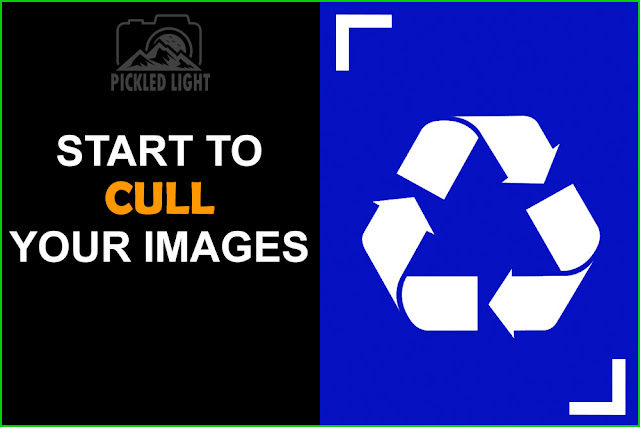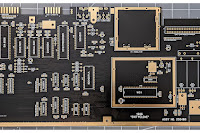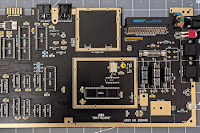
As I say in Who is Pickled Light?, I’m not a pro photographer and I’ve no wish to be. This is one of my hobbies and it started as a way to enjoy and capture my walks in the Scottish countryside, which is where I found myself on dry weekends after a long week in the office. In doing that I started to stumble across beautiful mountain and coastal vistas as well as a plethora of wildlife. It was a natural progression to wish to record these excursions so taking decent pictures became part and parcel of these weekend adventures. I share the best of these with my friends and family on social media but I keep the number of pictures I post under control.
There are 300 million pictures posted on one famous social media site every day – I see a tiny fraction of these but even that must amount to thousands. Consequently I spend just milliseconds scanning through the vast majority of the pictures I see and rarely spend more than a few seconds on all but the most meaningful so I’m not going to waste my time working on hundreds of pictures for them all to be glanced over in, quite literally, the blink of an eye. I think if amongst your peers you gain a reputation for only posting good pictures, you might get a few seconds more of their time than a brief glance and if you can manage to post a set of pictures which themselves tell a story then even better. But this is why it’s important that you do this for yourself first and foremost, and enjoy it, because the brutal truth is nobody cares that you walked 10 sweaty miles with a 5 kilo camera lens and rucksack through a glen to get one good picture of a Stonechat. A smiling selfie taken in the car park on your mobile phone before your walk will get more likes, I’d bet money on it. I’m still very much learning but I get a bit better every day and can take a competent picture these days. As a result, I actually take less pictures as I get to know what is going to work, what won’t and as my confidence increases in my ability to take a decent picture the first time.
If I were to tell you that after a day out with my camera I might take a couple of hundred photo’s that probably wouldn’t surprise you. What might surprise you is that I will probably only do something with about 10 of those. The first thing I do is load all of my pictures onto my computer and my backup (always, always, always have a backup of your pictures! I can’t stress that strongly enough). Then I open them up one by one and start to look at them critically. Here I’m going to explain what I’m looking for and what means a picture will never see the light of day:
- Out of focus or blurry. Yup, this happens from time to time and there’s no salvaging that. These never get used.
- Overexposed (Picture is too bright). Once of my pet hates is a white sky and as clever as my camera is, if I’ve exposed for a subject that is quite dark or in shadow this can mean that brighter objects, e.g. clouds, can become pure white or “blown out”. Now sometimes, if it’s otherwise a good picture, I will try to recover some of the detail in the blown out areas in post-processing software, but if I can’t then it gets discarded. To prevent this altogether I use the histogram in the camera and I will dedicate a later post to the use of this.
- Underexposed (Picture is too dark). This isn’t as bad as overexposed, and details in shadow can often be recovered afterwards in software. In fact, I sometimes deliberately underexpose a picture to make sure I don’t blow out highlights. However, sometimes it’s too dark and it’s just too difficult to do anything with. Again though, correct exposure can be obtained by using the in camera histogram.
- Distractions. Again, another of my pet hates: objects creeping into the edge of a picture, objects coming out of people’s heads, anything brightly coloured which isn’t the main subject. If these are too difficult (or downright fraudulent) to fix in software, then I just don’t use them.
- Too busy. If there’s a lot going on in a picture and it’s not clear what the subject is. Out it goes.
- Out of balance. If the object of my photo looks awkward, if it makes the picture seem unbalanced then out it goes. For example If a bird is looking to the left and I’ve captured it on the left side of the picture this doesn’t look right to me. Similarly if I’ve accidentally cut off legs or tails this makes the picture look unbalanced and they get binned too.
- Horizon’s not straight. This can usually be corrected in software but to do this the picture needs to be cropped and sometimes this cropping ruins the picture. Unless it’s obvious that the horizon isn’t straight for a specific reason, these get weeded right out. I try to get horizons as straight as possible when taking the picture.
- Too samey. Is this picture similar to one I’ve just used? Yes? Out it goes. This gets rid of the vast majority of my pictures from one session to be honest. Don’t see the point in using half a dozen pictures which all look the same.
- Can’t see the animals eyes. Get rid of it
- Part of the body of the animal obscured by branches/leaves etc. Unless it adds to the impact of the photo – by adding leading lines for example - I get rid of it.
- Bird is on a feeder? I dislike the look of these so never use them. In fact, I don’t use pictures of Passerine’s (perching birds) unless they are flying or sitting on a natural looking, uncluttered branch. Fence posts are ok too. Hides which are used by photographers will often have branches placed strategically around and near feeders to allow birds to land before going to or coming back from a feeder – that’s the reason they’re there and I try to take advantage.
However, the most important rule of them all is to ignore every rule if the photo works! Yes, sometimes a photo which breaks my rules just works.
I would like to think that I could get all my pictures perfect in camera and never need to edit them but sadly light conditions or other factors conspire against me and sometimes I have to do a bit of post processing. Normally this just means that I adjust the colour balance (sometimes pictures look too blue or too yellow), darken some highlights and brighten some shadows. I might increase the vibrancy if colours aren’t popping and very occasionally I’ll crop a picture to better balance it. That’s what I’m happy doing. I’m less happy when I have to actually remove something from a photo (for example if someone in a bright red jacket has wandered into the background of my scene and I hadn’t spotted them as I was taking the picture). If it’s a good picture otherwise I might clone them out and I don’t have a problem cloning out a stray branch or leaf from the edge of a picture if it’s distracting but I don’t like to do much more than that. If I’m changing the picture drastically, not only does this take a lot of time but I think it’s quite fraudulent – there’s a point where it ceases to become the picture I took – and that’s where I’ll stop. But everyone has their own limits as to what changes they deem acceptable or not and so long as they are happy with the final result, that’s all that really matters.



